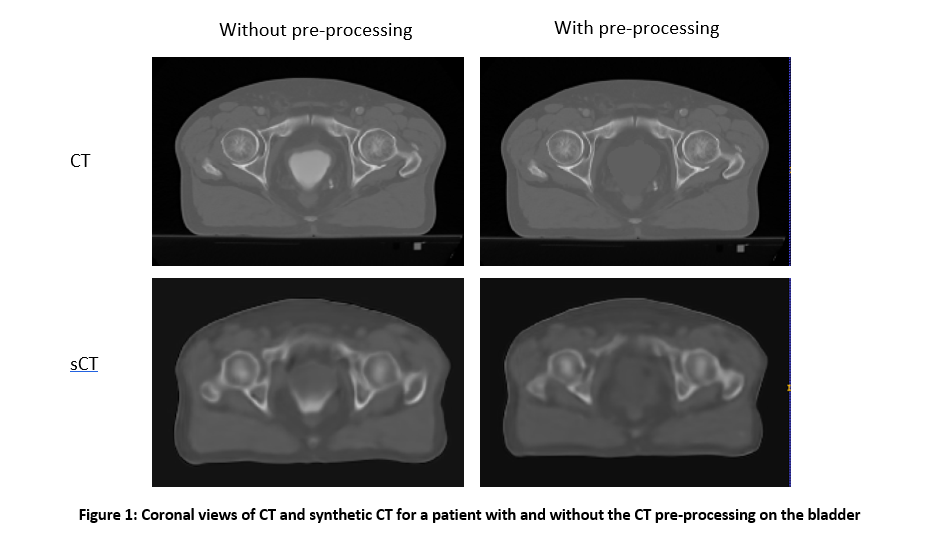Evaluation of synthetic CTs by 3D Cycle-GAN from prostate MR images
PO-1675
Abstract
Evaluation of synthetic CTs by 3D Cycle-GAN from prostate MR images
Authors: Emma COLLOT1, Pauline Lekieffre1, Blanche Texier1, Cédric Hémon1, Safaa Tahri1, Hilda Chourak1,2, Anaïs Barateau1, Caroline Lafond1, Renaud de Crevoisier1, Jean-Claude Nunes1
1LTSI, INSERM, UMR 1099, Univ Rennes 1, CHU Rennes, CLCC Eugène Marquis, Rennes, France; 2CSIRO Australian e-Health Research Centre, Herston, Queensland, Australia
Show Affiliations
Hide Affiliations
Purpose or Objective
In radiotherapy, one of the applications of deep learning methods has been to generate synthetic CTs (sCT) from MRI for dose calculation. The purpose of this study is to evaluate the 3D Cycle-GAN architecture and the impact of CT pre-processing using a contrast dye in the bladder.
Material and Methods
MR and CT images were acquired for 30 patients in treatment position. MR images have been acquired on a 1,5T GE Medical Systems Optima MR450w MRI scanner and CT images on a Siemens SOMATOM Confidence scanner. Patients had injected bladders for acquisition. Then, a CT pre-processing was performed by a density assignment of 0 Hounsfield Units on the whole bladder, to analyse the influence of the contrast dye on the generation of synthetic CTs. The synthetic CTs were obtained by the 3D Cycle-GAN architecture composed by two GANs in opposition, with a 9 Blocks ResNet generator and a PatchGAN discriminator, using the l1, the gradient, the binary cross entropy and the identity loss functions. To train this architecture, the hyperparameters used were a learning rate of 0.00005 and a batch size of 1. The training was done on two cohorts composed of 20 patients. A data augmentation with rotations of the images by 5° and 10° give trains composed of 60 datasets to enable a better convergence of the model. The evaluation was achieved on a cross validation to assess the impact on the sCT accuracy for body and bladder contours. The comparison between sCT and reference CT were evaluated by voxel-by-voxel measures: the mean absolute error (MAE) and the mean error (ME) both in Hounsfield Units (HU), and by the peak signal to noise ratio (PSNR) in dB.
Results
Table 1 shows the difference in value for MAE, ME and PSNR for body and bladder contours. MAE and ME were improved for the body and the bladder with a CT pre-processing. Figure 1 highlights that the injected bladder is not in evidence anymore.


Conclusion
The CT pre-processing improves sCT generation for patients with injected bladders especially on the bladder which lead to an enhancement of the body contour results.